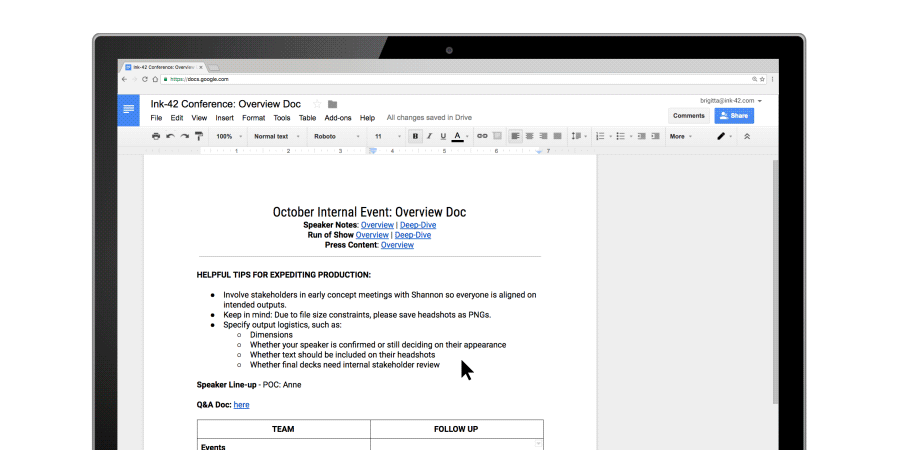New time-saving features in G Suite for Education
G Suite for Education helps students move from collecting ideas to creating projects and papers as quickly and easily as possible. Google Docs achieves this by facilitating collaboration, making it easy to work on any device, and weaving in machine intelligence to handle the more mundane elements of getting work done.
Today we’re introducing new time-saving features to Docs, Sheets and Slides designed to speed up and simplify the way teachers and students work, so they can focus on what’s really important—teaching and learning. These apps still have all of the same functionality that students and teachers love, with the addition of these new features.
1. Less time spent organizing next steps with Action Items
When reviewing a student’s assignment, it's helpful for teachers to give them clear guidance on the next step they should take, like which specific paragraphs need to be reworked in their essay. Now, when teachers type phrases like “AI: Ryan to show work on the answer to this problem,” or “Todo: Andrea to fix punctuation in this paragraph” on desktop, Docs will intelligently suggest an Action Item to assign to the right person, thanks to natural language processing (NLP).

Teachers can also manually assign an action item to a student in the Docs, Sheets, and Slides desktop and mobile apps by mentioning them in a comment and checking the new action item box. To help the student stay on track, they will get an email notification and see the action item(s) clearly highlighted with a blue bar when they open the file.
![[edu] docs bundle](https://storage.googleapis.com/gweb-uniblog-publish-prod/original_images/image01_4LbbA3p.gif)
2. Less time spent searching for the files that need attention
Once action items have been assigned, it’s now easy for students to identify documents, spreadsheets, and presentations that need their attention. The next time they visit Docs, Sheets, Slides (or Drive) from their laptops or mobile apps, they’ll see a badge on files with action items assigned to them, plus any unresolved suggestions that others have made to their files.
![[edu] docs bundle](https://storage.googleapis.com/gweb-uniblog-publish-prod/images/image00_6J2wPmz.width-100.format-webp.webp)
3. Less time spent building questions with smarter Forms
Since its launch in 2008, over a billion questions have been asked in Forms. With the help of neural networks, our tools reviewed anonymized data and identified many common patterns in Forms. As a result, Forms can now predict the type of question that is being asked and suggest response options based on what is typed, resulting in 25% faster form creation.
For example, a teacher can collect information for the marching band’s upcoming trip. When she types “What day of the week are you and your parent/guardian available?”, Forms will intelligently determine that “Checkbox” is the ideal question type, and generate the days of the week as the appropriate response options that can be added one by one or all together.
![[edu] docs bundle](https://storage.googleapis.com/gweb-uniblog-publish-prod/original_images/image04.gif)
Also debuting today, is a top-requested feature from our education customers — the new “File upload” question type. Students can now upload files from their computer or Drive — all of which are neatly collected in a folder in the teacher’s Drive. This means students can now add files—from a photo for the marching band program to videos of French dialogue practice—directly to Google Forms. Note: This feature is currently only available for intra-domain use.
![[edu] docs bundle](https://storage.googleapis.com/gweb-uniblog-publish-prod/original_images/image03_Ezpayv0.gif)
4. Less time spent typing with a set of new voice typing commands
Last year, we launched Voice typing in Docs on the web helping to capture ideas, big and small, without lifting a finger. Today, we’re adding new ways for teachers and students to format and customize content with voice commands for changing text color, deleting words, inserting links and comments, plus a number of other ways to format, hands-free.
With the combination of today’s updates and last month’s Explore launch, we’re channeling machine intelligence to help students stay on track with their assignments and give them time to focus on the things that will help them succeed.






